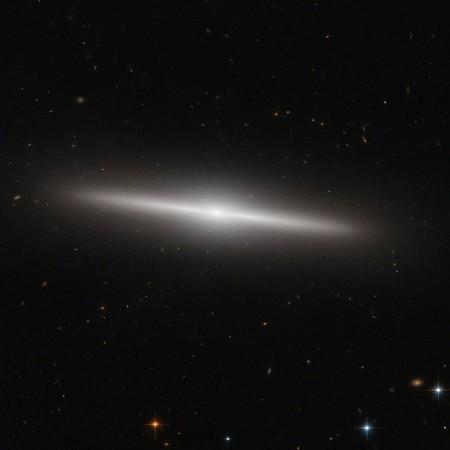
NASA's Hubble Space Telescope has spotted a new galaxy almost 60 million light years away from Earth.
The spectacular photograph of the new discovery was released by NASA on its Facebook page on 24 December.
Dubbed as IC 335, the new galaxy is a part of a group of three galaxies located in the Fornax Galaxy Cluster. NASA's website states that Fornax is the closest galaxy to the Milky Way.
Galaxies can be classified into three categories: elliptical, spiral and irregular. According to the image, it is difficult to identify the disk of the galaxy as it seems to appear on the edge of the Earth.
This new galaxy seems to straddle categories.
Experts have categorised IC 335 as an S0 type. S0 type galaxies are lenticular, i.e. those galaxies which have an intermediate state, falling between true spiral and an elliptical galaxy.
"It clearly isn't an elliptical galaxy since it looks flat, but it doesn't seem to have matter between the stars...so the scientists involved classify it as an intermediate type between spirals and ellipticals," Dr. Jay M. Pasachoff, professor of astronomy at Williams College in Williamstown, Massachusetts, and co-author of 'The Cosmos: Astronomy in the New Millennium', told The Huffington Post.
Along with the picture, NASA also wrote a post in which it stated that "as S0 galaxies have only ill-defined spiral arms they are easily mistaken for elliptical galaxies if they are seen inclined face-on or edge-on as IC 335 here."
NASA notes that in this particular image, it can be seen that "they have a thin stellar disk and a bulge, like spiral galaxies, but in contrast to typical spiral galaxies they have used up most of the interstellar medium."
IC 335 is around 45,000 light-years long and mostly consists of "aging stars" and its star formation rate is also very low. This is a characteristic of elliptical galaxies.
NASA experts hope to witness many more wonders through the Hubble telescope and find answers to numerous unanswered queries of the curious human mind.
















